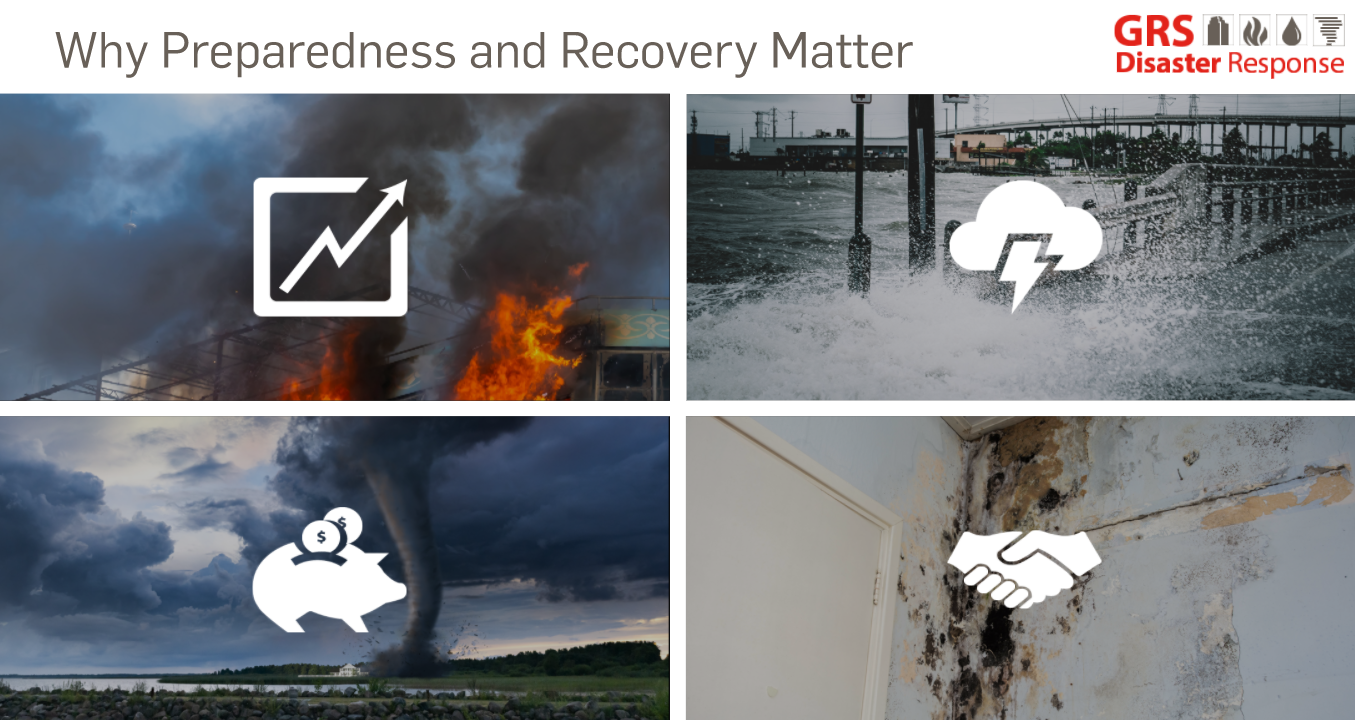Practitioners of business continuity continuously ask the question, “What if this happened…or that?” They look at minor events impacting business operations to major setbacks and shut-downs. Part of strategic risk management planning is to formulate “workarounds” should an event cause disruption to any aspect of the business. The goal is to prepare so a minor disturbance does not progress into a significant event. This is accomplished through table-top exercises that simulate potential real-life events, and in turn we see how the players react or what resources need to be in place to manage continuity. Critical questions any risk manager must ask regarding preparedness include:
- What are our critical functions?
- If we lost power, what considerations would be needed to determine a company’s power generation needs?
- What is in place now?
- Who is in charge during or after an event?
A fire, a flood, or a tornado can all be sudden events where company personnel should provide a standard of response that assures that the Maximum Tolerable Period of Disruption (MTPD) will not be compromised. It’s cliché, but time is money, and the longer the downtime for a company the more profit and customers it stands to lose. If your manufacturing plant is deemed unfit for production, who will step up and become the new source for your customer? Or worse yet, your production lines come to a sudden halt due to a single-source provider that had an incident that prevents the shipment of a critical part to you for an extended period. Should you require your supply chain vendors to show you their plan? Regardless of the type of business, pre-loss planning is essential to your success in dealing with threatening events. It is also critical for a company to consider all necessary potential vendors with a margin of redundancy built into the plan.
In an article by David Mistick entitled, The Six Myths of Disaster Planning (Mistick, 2010), he looks at the reasons companies put off their need for disaster planning and addressing risks. You can eliminate it, reduce it, transfer it or accept it. Adding those questions to your planning process will allow you to develop a plan that will hopefully never need to be implemented.
Don’t wait until it is too late. Begin the planning process today. We at GRS Disaster Response can help with the facility response part of a plan. Fire, hurricanes, earthquakes, freezing conditions or snow loads can affect your facility and your production. Cyber and pandemic affect companies in other ways that disrupt everyday business function. Having a risk mitigation strategy is critical to protect a business.
For more information on Preparing for the Unexpected, click here.
Why Preparedness and Recovery Matter
We invite you to click on the image below and view how these solutions are deployed on our projects.
Helpful resources
Other recommendations, including templates and questionnaires to help start preparing your business against potential disruptions, are located here.
Works Cited
Mistick, D. J. (2010). Six Myths of Disaster Planning. Retrieved from er-emergency.com.


